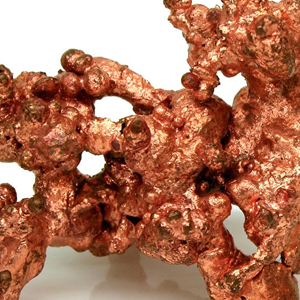Ah Copper, our old nemesis. Mankind’s struggle to tame this metallic beauty has lasted for thousands of years. In 5000 BC, our caveman started melting down copper, successfully making it the first ore to ever be smelted. Since then it’s a backbone metal of our entire human society. So why can it be so hard to work with?!
Like most things in welding, copper is truly only difficult when you don’t know how to work with it properly. Because of its ability to absorb heat incredibly fast, many welders find themselves in an uphill battle to keep their workpiece hot enough. However, with the right methods and settings, you’ll be able to weld copper like Patrick Swayze on the dance floor.
Since copper cools so quickly, the real challenge is maintaining enough power. For this reason, many experts recommend only using 100% helium as a shielding gas. This is because Helium has 70% more power (amperage) than Argon gas. That’s a pretty good boost, but Helium is also quite expensive.
What shielding gas you use really depends on how powerful your machine is and how thick your workpiece is. So let’s say you’ve got a welding machine that can really push the amps and a torch that can handle that kind of power. You’ll probably be able to get away with using Argon if your workpiece is less than 4 mm thick. However, anything more demanding than that and you’ll find yourself struggling to get the power you need. At this point you might consider switching over to 75% or even 100% Helium.
Shielding gas isn’t the only preparation you’ll need to consider. Before you start welding, you’ll want to make sure all your settings are correct. When TIG welding copper you should use DC and Tungsten Electrodes (in most cases). The amps needed for the job will depend largely on how much preheating you do, the type of shielding gas you’re using and your workpiece thickness. Make sure you consult a reference guide beforehand.
Once you’ve got all your proper parameters, the only real trick with welding copper is to make it as quick and clean as possible. The longer you spend welding, the more time Oxides have to rush in and contaminate your piece. When you start welding, give yourself a couple seconds to form a good pool and then lay down a nice, quick bead. If you’re dinking around while daydreaming about pink ponies in sparkly bikinis, your weld’s going to suck (and you’ve got some deep-seeded issues). It’s a good idea to practice a couple times on a scrap piece you’ve got laying around before you go to your real workpiece.
After a bit of practice, welding copper won’t be any harder than mild steel. We do realize that with over 7,000 years of experts working with copper, there’s plenty of pro tips out there we didn’t cover. Let our team know in the comments section below what techniques you’ve found work best for you when welding copper.







